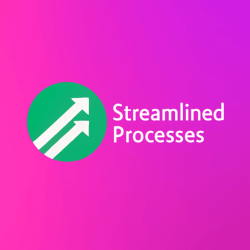For Intelligent Marketing Automation, see our main page here.
What Is Intelligent Marketing Automation?
Intelligent Marketing Automation combines traditional marketing automation with artificial intelligence and machine learning. It enables systems to learn, adapt, and optimize campaigns in real time. Unlike basic automation, which only follows a set of predefined rules, this advanced approach evaluates performance and adjusts behaviors accordingly.
For example, instead of blasting emails to an entire list, the automation system can now identify who is most likely to open, click, or convert based on historical behavior. As a result, marketing becomes more targeted and efficient, leading to better ROI and customer satisfaction.
How Did Marketing Automation Evolve?
In the late 1990s, marketers began using email automation platforms like Eloqua and Constant Contact. These tools were revolutionary but static. They couldn’t adapt based on user behavior.
Fast forward to today: we have Intelligent Marketing Automation tools that not only send emails but also predict when to send them, tune subject lines, and personalize offers using AI algorithms. This shift represents a massive evolution from rule-based logic to adaptive, predictive systems with decision-making capabilities.
Consequently, brands that adopt these solutions stay competitive while others fall behind.
Key Features of Intelligent Marketing Automation
- Predictive analytics: Forecast customer behavior using past data.
- Dynamic segmentation: Automatically group users based on intent and actions.
- Personalized content: Tailor messages for each user in real-time.
- Campaign optimization: Adjust campaigns based on performance metrics as they run.
- Lead scoring: Use AI to identify high-converting leads more accurately.
These features work together to reduce manual tweaks and improve results. Moreover, they scale effortlessly as your customer base grows.
Benefits of Intelligent Marketing Automation
Most importantly, this technology saves time and boosts performance. However, its impact runs deeper than efficiency. Here’s what businesses gain:
- Better customer insights: Learn what works and what doesn’t using predictive models.
- Improved engagement: Customers respond better to personalized messages.
- Higher conversions: Intelligent automation targets the right person at the right time.
- Less human error: Automated decisions eliminate inconsistencies in messaging.
In short, this technology helps brands build smarter campaigns with fewer mistakes.
Real-World Example: eCommerce Leads and Conversions
Consider an online beauty brand using Intelligent Marketing Automation to improve cart abandonment emails. The system notices that users respond better on weekdays and prefer discounts on skincare items.
With this data, the system sends messages specifically at 11 a.m. on Tuesdays, offering 15% off only for skincare products viewed but not purchased. The results? Open rates jump by 35%, and conversion increases by 22% over three months.
This shows how AI can go beyond standard automation, making smarter decisions that drive revenue.
Comparing Traditional and Intelligent Marketing Automation
Here’s how the two approaches differ:
| Traditional Automation | Intelligent Marketing Automation |
|---|---|
| Follows set rules and schedules | Adapts using machine learning |
| Sends identical messages to a list | Creates dynamic, personalized messages |
| Requires manual campaign changes | Auto-adjusts campaigns based on performance |
| Limited insight into behavior | Deep behavioral and intent analysis |
Clearly, upgrading to intelligent systems gives you a competitive edge in today’s digital landscape.
Trends Driving the Growth of Intelligent Marketing Automation
Several shifts are pushing businesses toward smarter automation tools:
- Data explosion: So much data exists that manual analysis isn’t feasible anymore.
- Customer expectations: People now expect personalized, timely communication.
- MarTech integrations: Modern tools easily integrate with CRM, analytics, and chat systems.
- AI accessibility: Affordable AI tools make intelligent automation feasible even for small businesses.
As a result, adoption continues to rise across industries from software to retail to healthcare.
Best Practices for Implementing Intelligent Marketing Automation
Starting with intelligent tools can feel overwhelming. However, following these practices will improve the onboarding process and outcomes:
- Start with clear goals (e.g., increase lead conversions by 15%).
- Integrate your data sources to create a unified view of your customer.
- Segment audiences based on real behavior, not guesses.
- Test small before scaling – use A/B testing and analyze results.
- Train your team on how to read and act on machine-generated insights.
Above all, make sure someone is accountable for overseeing the system so performance doesn’t dip over time.
FAQ: Intelligent Marketing Automation
Is it only for large businesses?
No. Tools like ActiveCampaign, Mailchimp AI, and HubSpot Pro make it affordable for small teams. Many startups use these tools to scale without hiring more staff.
Does Intelligent Marketing Automation replace marketers?
Not at all. It empowers marketers by automating repetitive tasks and offering insights. Marketers still create strategy, write content, and guide creative vision.
How long does it take to see results?
Some companies see improvements in a few weeks. However, larger campaigns may take a few months to fully optimize. Consistent tracking helps speed up results.
How safe is user data in these systems?
Reputable platforms comply with privacy laws like GDPR and CCPA. Always choose vendors with transparent policies and security certifications.
Can I use AI tools to write email content too?
Yes, you can use AI to generate headlines, copy, and subject lines. However, it’s best to review and adjust for tone, voice, and brand alignment.
Final Thoughts on the Future of Intelligent Marketing Automation
In conclusion, Intelligent Marketing Automation is not a passing trend—it’s the future of performance-driven marketing. Companies that adopt it enjoy faster decision-making, better customer journeys, and increased ROI. Meanwhile, those that wait risk being left behind.
This article was created with the assistance of AI tools and reviewed by our team at Streamlined Processes LLC to ensure accuracy and relevance.
Follow us on Facebook here.

